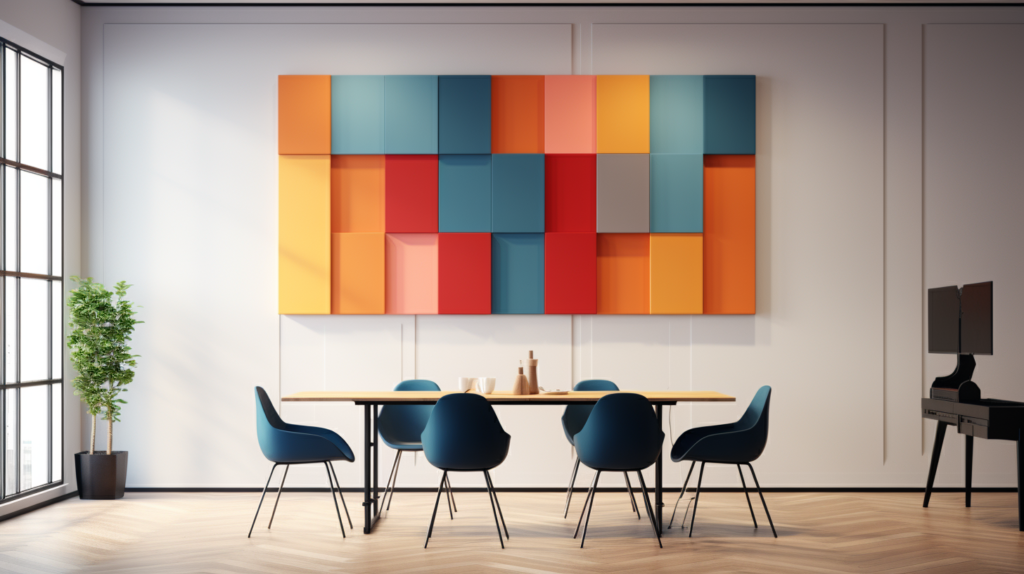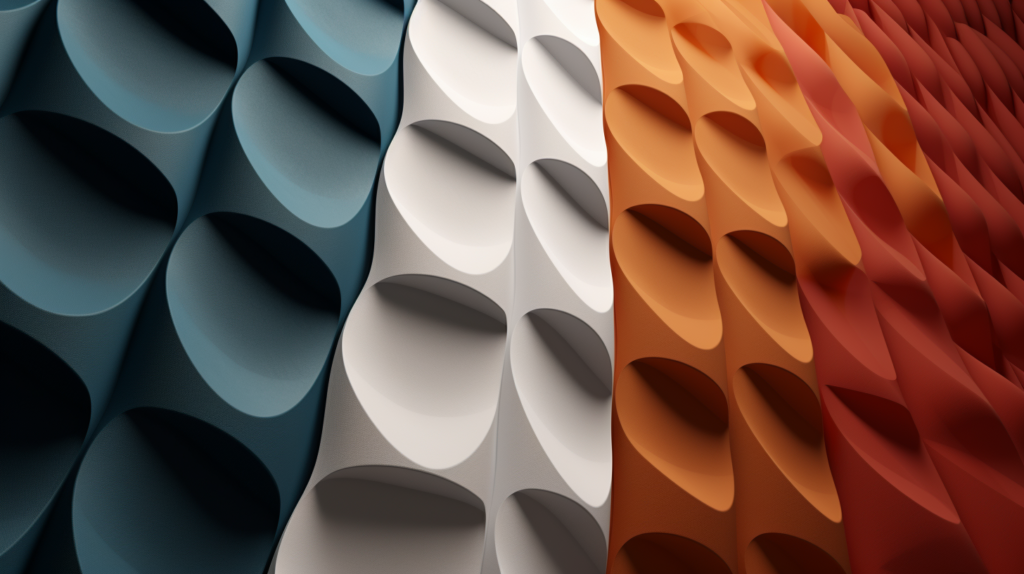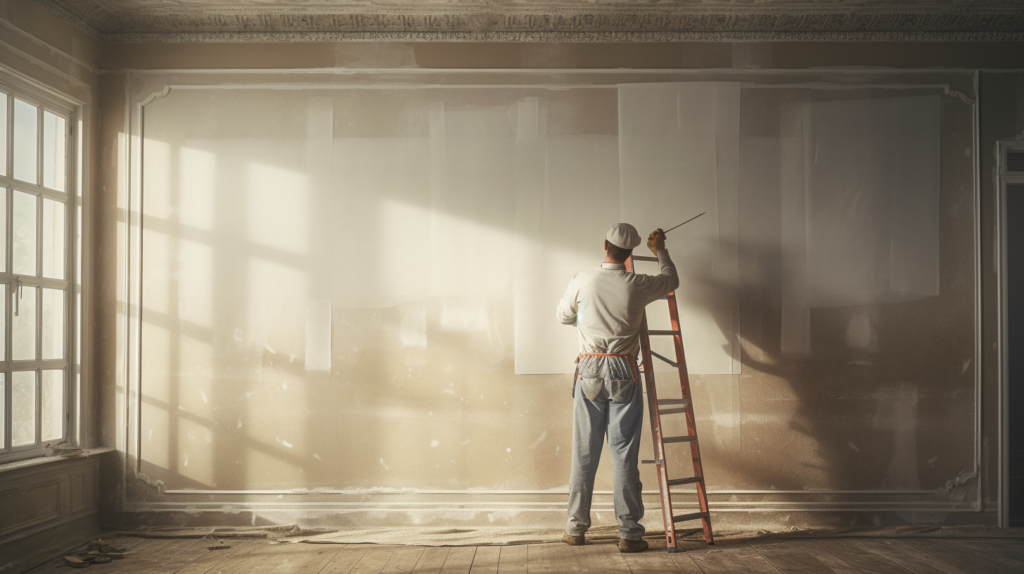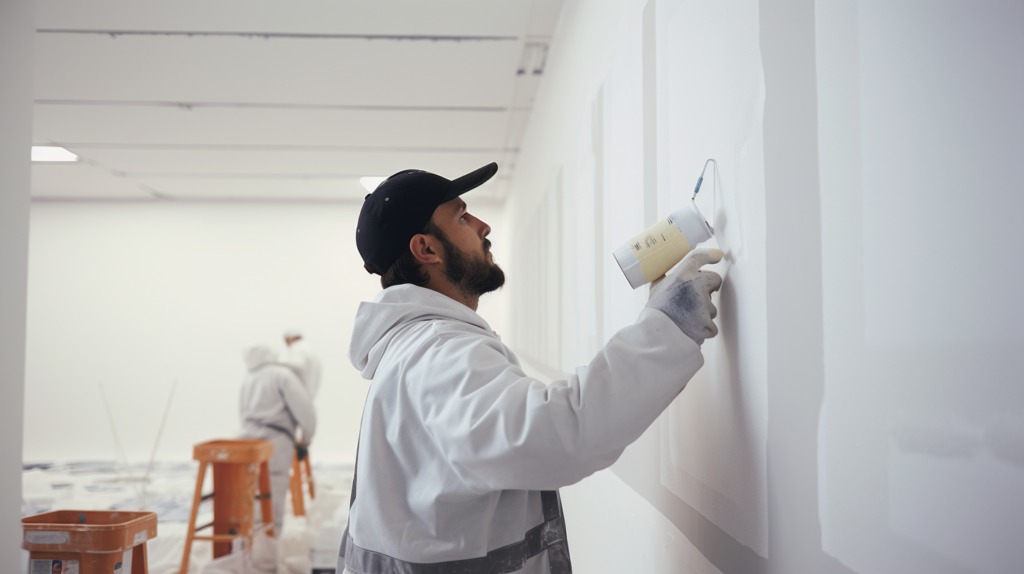
Have you ever looked at your room’s acoustic foam and thought, “I wish I could paint this to match my decor,” but paused, fearing you might ruin its sound-absorbing qualities?
While acoustic foam is a technological marvel in sound absorption, its limited color options often pose a design dilemma. This brings us to a critical question: Can acoustic foam be painted without losing its effectiveness?
In this guide, we’ll dissect this intricate issue.
So, let’s dive in and explore whether you can truly combine aesthetics with acoustic functionality.
What Is Acoustic Foam And Why Would You Want To Paint It?

When you first encounter acoustic foam, it’s hard not to be impressed by its specialized capabilities.
Designed with intricate shapes like wedges, pyramids, or egg-crate patterns, acoustic foam is engineered to trap and dissipate sound waves, thereby enhancing acoustic clarity and minimizing distractions caused by echo and reverberation.
But what happens when this functional, yet often drab, material collides with your interior design aspirations? The result is a clash of priorities.
On the one hand, you have a highly effective material that can significantly improve your acoustic environment. On the other hand, its appearance can be an eyesore, particularly if you have a carefully curated interior design.
That’s why the idea of painting acoustic foam becomes so tempting. It seems like an easy fix to a glaring problem.
But before you embark on a painting spree, it’s crucial to delve into the composition of acoustic foam and the science behind its sound absorption capabilities.
What Materials Are Commonly Used In Acoustic Foam?

At the heart of most acoustic foam panels is a material known as polyurethane. This synthetic polymer is highly flexible and is characterized by a cellular structure that makes it ideal for absorbing sound.
But not all acoustic foam panels are made alike. Depending on the manufacturer and the intended use, the density and cell size of the foam can vary, affecting its sound-absorbing properties.
It’s also worth mentioning that polyurethane foam is not the only material used in acoustic treatments. There are also other materials like mineral wool and fiberglass wool, which are often used in more industrial or specialized applications.
These materials have a different set of acoustic properties and are usually denser and less flexible than polyurethane foam. Consequently, they are not as susceptible to the issues that arise when painting acoustic foam.
However, these alternative materials are generally more expensive and harder to work with, making them less suitable for general consumer use.
How Does Acoustic Foam Absorb Sound?

One of the most fascinating aspects of acoustic foam is its ability to absorb sound, a characteristic that has made it a staple in soundproofing projects worldwide. But how does this seemingly simple material achieve such a complex task?
The answer lies in its porous cellular structure. Each piece of acoustic foam is filled with countless tiny air pockets that act as absorptive chambers.
When sound waves hit the surface of the foam, they penetrate these pockets, losing their energy and dissipating as heat. This is the essence of sound absorption and the primary reason why acoustic foam is so effective.
However, this is where the challenge of painting comes into play. The porous nature of acoustic foam is a crucial part of its sound-absorbing mechanism.
When you paint over these pores, you risk filling them with paint, thereby reducing the foam’s ability to absorb sound. It’s akin to clogging the pores of a sponge; the sponge becomes less effective at soaking up water.
The same principle applies to acoustic foam. By filling its pores with paint, you’re essentially converting specialized acoustic foam into regular foam, which lacks the same sound-absorbing qualities.
This is why understanding the science behind how acoustic foam works is so critical before making any decisions about painting it.
Why Do People Want To Paint Their Acoustic Foam?

The desire to paint acoustic foam is driven by various factors, each depending on individual circumstances.
For some, it’s a matter of aesthetics. Imagine spending hours designing the perfect home theater, complete with luxurious seating, a state-of-the-art sound system, and a large screen for the ultimate cinematic experience.
Now, imagine sticking gray or black foam panels on the walls. The clash can be jarring, and for many, it’s enough to consider painting the foam to match the room’s color scheme.
For businesses, the reasons might be different. Companies often invest in high-quality recording setups for podcasts, video conferences, or customer service operations. In these professional settings, branding can play a significant role.
A company might prefer to have acoustic foam panels that match its corporate colors, especially if the space is going to be visible in promotional materials or social media posts.
Then there are educational and community settings, such as schools and churches, where the acoustic foam might be used in auditoriums or music rooms.
In these environments, the color of the foam might need to match the institution’s colors or the decor of a specific room, like a children’s area, to create a more cohesive and inviting atmosphere.
What Happens When You Paint Acoustic Foam?

The act of painting acoustic foam might seem simple, but the implications are far-reaching. From a scientific standpoint, paint is a liquid composed of pigments and a solvent, usually water or oil.
When you apply paint to a porous surface like acoustic foam, the liquid component of the paint can seep into the foam’s open structure, filling it up and effectively reducing its porosity.
This is more than just a cosmetic change; it’s a fundamental alteration of the foam’s physical and acoustic properties.
When the foam’s pores get filled with paint, the material loses its ability to capture and dissipate sound waves effectively. This effect is not merely theoretical; it’s a scientifically proven consequence of altering the foam’s structure.
Therefore, while the aesthetic gains might be immediate and satisfying, the long-term impact on the foam’s performance can be detrimental.
Will Painting Acoustic Foam Affect Its Performance?

If you’ve followed along so far, you might already suspect the answer to this question, but it’s crucial to spell it out clearly: Yes, painting acoustic foam can significantly impact its performance.
The reason is rooted in the foam’s physical structure. Each pore in the foam acts as a tiny chamber that captures and dissipates sound energy.
When these pores are filled with paint, they can no longer perform this function effectively. You might still gain some sound absorption, but it won’t be as efficient as the untreated foam.
This loss in performance is not just a minor inconvenience; it can be a critical issue, especially in settings where acoustic quality is paramount. For example, in a recording studio, even a small reduction in sound absorption can impact the clarity and quality of recordings.
The situation might be even more problematic in settings like home theaters, where the acoustic foam is part of a broader soundproofing strategy.
In such cases, the reduction in performance can result in noticeable sound leakage, defeating the purpose of the soundproofing efforts.
Are There Alternatives To Painting Acoustic Foam?

The challenges associated with painting acoustic foam might seem disheartening, especially if you’ve spent time and effort designing a room and consider the foam’s color the final piece of the puzzle.
But don’t lose hope; alternatives exist that allow you to add a splash of color without sacrificing acoustic performance.
One such alternative is fabric wrapping. This involves covering the acoustic foam panels with a layer of fabric.
The key here is to choose a fabric that is acoustically transparent, meaning it allows sound to pass through it freely. Fabrics like burlap or specialized speaker cloth are often good choices.
The fabric can be attached to the foam using a variety of methods, including specialized adhesives or even mechanical fasteners like staples, as long as they don’t compromise the foam’s structure.
Another exciting alternative is the use of acoustic art panels. These are specialized panels that feature a printed fabric front, customizable to display any design or pattern you like.
The fabric used in these panels is usually acoustically transparent, ensuring that the sound absorption properties remain intact. This option allows for almost unlimited customization, offering a perfect blend of form and function.
Conclusion
The question of whether you can paint acoustic foam is more complex than it might appear at first glance. While painting the foam may offer an immediate aesthetic benefit, the long-term implications on its acoustic performance can be significant.
The science behind how acoustic foam absorbs sound makes it clear that filling its pores with paint is likely to reduce its effectiveness. However, all is not lost for those seeking to add a visual element to their acoustic treatment.
Alternatives like fabric wrapping and acoustic art panels provide a pathway to achieve both aesthetic appeal and acoustic performance.
In the end, the choice might come down to what you prioritize more: appearance or function. But with these alternatives, you might not have to choose.